Ground conditions had remained reasonable in all areas , although this week’s rain could change that. Final autumn herbicides and aphicides are now being applied. The attention now turns to machinery maintenance in Carlow while beet harvesting is about to commence in Tipperary. Meanwhile the potato harvest is drawing to a close in Donegal.

Busherstown,
Co Carlow
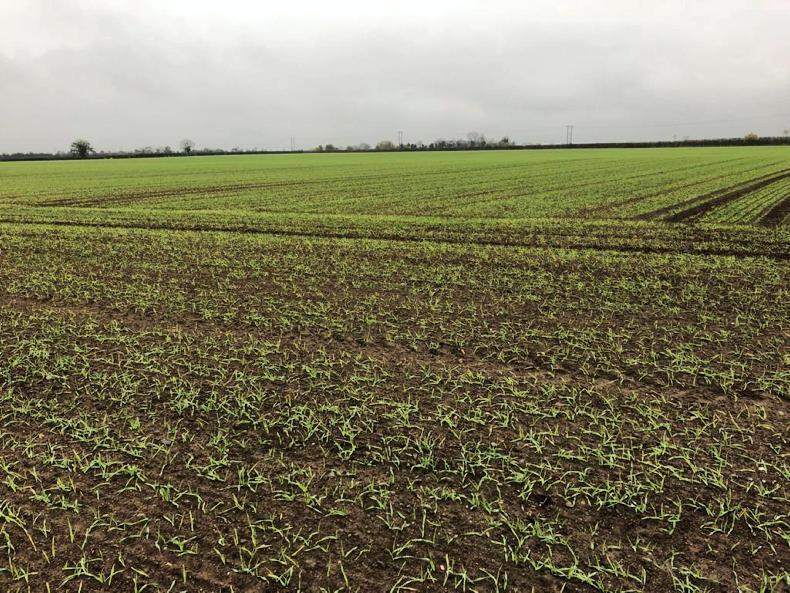
Emergence of Larry Doyle's Belfry winter barley this year is high.
Sowing was only interrupted once by storm Callum last month in Busherstown, but after a couple days of drying, Larry was back in the fields. Since then the weather has been fine and ground conditions are exceptional for the time of year. Temperatures are much lower this week, however, which has slowed growth in the area.
Larry finished sowing winter wheat on 22 October. He sowed Bennington at 150kg/ha, with a TGW of 48g and his Graham at 135kg/ha with a TGW of 44g. All seed was treated with Redigo and Larry was aiming to establish 260 plants/m2. He doesn’t envisage the need for an aphicide and all ground was rolled. “We’ve never really had a slug problem on our farm but we roll anyway for a number of reasons,” said Larry. While there are crows in fields, numbers are around average.
The crop received an application of Stomp aqua (2.9l/ha) and DFF (0.15l/ha) a number of weeks ago. He may apply a follow-up spray of Broadway Star in the spring if needs be.
His winter barley received a pre-emergence spray of Firebird (0.3l/ha) and it appears to have bleached the crop slightly. “I’d be happy enough to close the gate on the winter barley now. The weather is cooler so we won’t apply an aphicide,” said Larry.
Finally Larry sowed his Barra winter oats at 125 kg/ha and the crop is destined for the gluten-free market. The seed had a TGW of just 30g and he is aiming for 320 plants/m2. The crop was sowed at 410 seeds/m2, aiming for 78-80% establishment. This was the lowest seeding rate he could go.
The seed was treated with Anchor and Nutriseed which contains manganese.
The oats are sown on very high pH soil and Larry feels some nutrients may be locked up. If the weather holds, he may apply DFF (0.25l/ha) on to the crop.
“The land work is largely finished now and we’ve started to do a bit of maintenance and repairs on machinery. The planning now starts for next year.”

Clonmel,
Co Tipperary
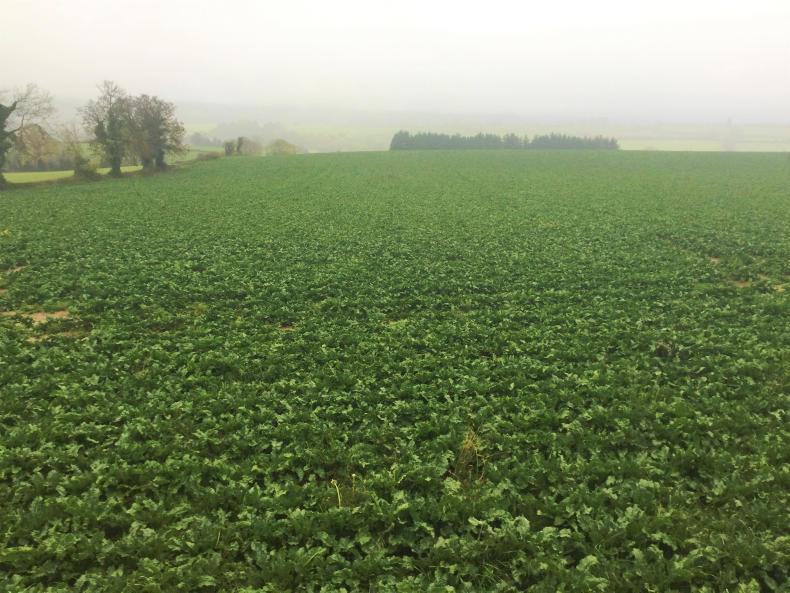
John C Byrne expects to start lifting his fodder beet this week.
A short break in the weather a number of weeks ago did little to hinder sowing progress in Clonmel and ground conditions still remain good, said John. “October really has been a fabulous month weather-wise,” he said.
John’s cattle have more grass today than they had on 26 September, the day John started sowing. He was concerned he may have to start feeding his cattle during sowing which would prove logistically difficult. However, he now expects not to have to start feeding until later this week.
Sowing went relatively smoothly. He sows using a 3m mounted Amazone drill with a front-mounted Guttler furrow press, following a four-furrow Kverneland plough. Going well, John can average 20ac/day.
Establishment of his Belfry, Bazooka and Pixel winter barley is high and the crops received a pre-emerge herbicide application of Flight (3.5l/ha) a number of weeks ago. He plans to apply an autumn aphicide this week.
He doesn’t envisage having to spray his winter oats for aphids, the seed of which was treated with Redigo Deter. Some of the crop was sown straight after barley as John was afraid the ground could get sticky. He sowed his Husky oats at 150kg/ha and the crop received no herbicide. He may apply Cameo in the spring to target broadleaved weeds.
‘World congregation of crows’
John sowed his Bennington winter wheat at 160kg/ha with a TGW of 44g. The crop was sown in perfect conditions and while the first half has emerged well, the other half has sustained severe damage from crows.
“You’d swear we had a world congregation of crows here. I’ve never seen numbers like it before. The sky was black with them,” said John.
The crops will be sprayed with Flight soon.
The good growing conditions this autumn have taken the pressure off iin the area. John now plans to start lifting beet this week and have the bulk of the field lifted by the end of November. The crop was sprayed with Escolta (1.5l/ha) on September 15 to ensure the beet leaves remain green for his Armer Salmon harvester.
“While there isn’t as big a canopy in the beet crop this year, the leaves have a lovely bright green colour,” he said.

Cloon,
Co Donegal
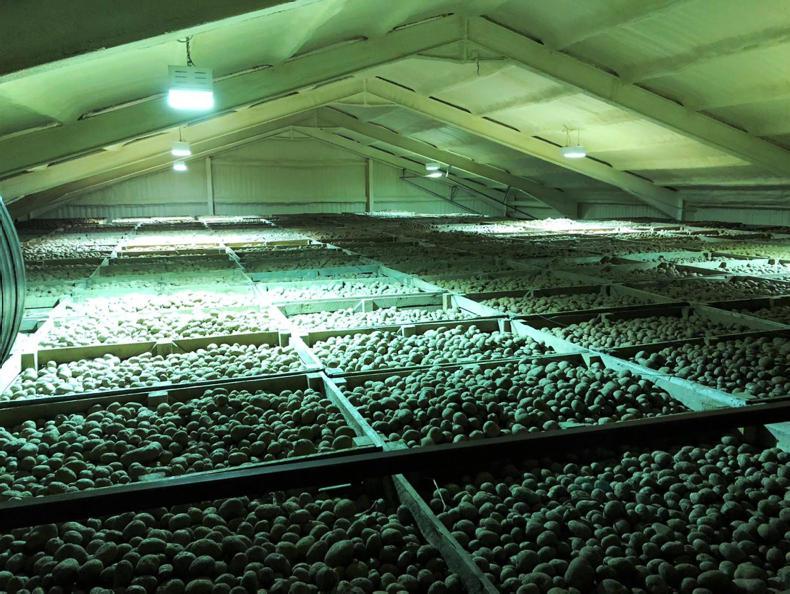
Tubers will be cooled to 2.5°C in Jamie Rankin’s potato store after curing.
Ground temperatures fell fast in the northwest over the past two weeks. This may have helped speed up tuber maturation but the frosty mornings have delayed the start time of harvesting on a number of occasions. When tuber temperature falls to 8°C and below, the likelihood of harvest damage increases. Ground conditions are still largely excellent, however, which is helping Jamie get through the work.
As ground conditions at harvest were so good, there have been opportunities to sow more winter wheat. Jamie finished sowing his Costello winter wheat on 20 October. The crop was sown at 330 seeds/m2. At 85% establishment, he was aiming for a plant stand of 280 plants/m2.
Establishment in his Tower and Cassia winter barley is also high. Some ground was rolled where slugs and manganese deficiencies are normally a problem. The crops received an application of pendimethalin (600g/ha), chlorotoluron (500g/ha) and diflufenican (80g/ha) a number of weeks ago. Some of the early sown barley crops have also received an aphicide.
Jamie has had a good run at the potato harvest this year and he is now down to his last 50 acres. Stoppages due to rain have largely been confined to the weekends which has been welcomed by his staff. Overall, yields are close to average for the area but variations are evident depending on a range of factors including irrigation, sowing date, variety and soil type.
Rooster and Saxon are performing well but scab is a particular problem on some of his Maris Piper crops. When the potatoes arrive to the yard in boxes from the field, they are first loaded into the fridges. Lifting around 250 to 300 boxes per day, it generally takes around five days of digging to fill the fridge. To cure the potatoes, positive air flow is driven through the boxes for around 10 days, which dries the tubers and any wounds. Curing temperatures depend on the temperature of the tubers at harvest. The potatoes are then gradually cooled to around 2.5°C for storage.
“If the weather would remain kind for another six to seven days, we’ll have the harvest finished up.”
Read more
Watch: from the tramlines – autumn sowing complete in perfect conditions
Tillage management: complete autumn husbandry once planting is finished
Ground conditions had remained reasonable in all areas , although this week’s rain could change that. Final autumn herbicides and aphicides are now being applied. The attention now turns to machinery maintenance in Carlow while beet harvesting is about to commence in Tipperary. Meanwhile the potato harvest is drawing to a close in Donegal.

Busherstown,
Co Carlow

Emergence of Larry Doyle's Belfry winter barley this year is high.
Sowing was only interrupted once by storm Callum last month in Busherstown, but after a couple days of drying, Larry was back in the fields. Since then the weather has been fine and ground conditions are exceptional for the time of year. Temperatures are much lower this week, however, which has slowed growth in the area.
Larry finished sowing winter wheat on 22 October. He sowed Bennington at 150kg/ha, with a TGW of 48g and his Graham at 135kg/ha with a TGW of 44g. All seed was treated with Redigo and Larry was aiming to establish 260 plants/m2. He doesn’t envisage the need for an aphicide and all ground was rolled. “We’ve never really had a slug problem on our farm but we roll anyway for a number of reasons,” said Larry. While there are crows in fields, numbers are around average.
The crop received an application of Stomp aqua (2.9l/ha) and DFF (0.15l/ha) a number of weeks ago. He may apply a follow-up spray of Broadway Star in the spring if needs be.
His winter barley received a pre-emergence spray of Firebird (0.3l/ha) and it appears to have bleached the crop slightly. “I’d be happy enough to close the gate on the winter barley now. The weather is cooler so we won’t apply an aphicide,” said Larry.
Finally Larry sowed his Barra winter oats at 125 kg/ha and the crop is destined for the gluten-free market. The seed had a TGW of just 30g and he is aiming for 320 plants/m2. The crop was sowed at 410 seeds/m2, aiming for 78-80% establishment. This was the lowest seeding rate he could go.
The seed was treated with Anchor and Nutriseed which contains manganese.
The oats are sown on very high pH soil and Larry feels some nutrients may be locked up. If the weather holds, he may apply DFF (0.25l/ha) on to the crop.
“The land work is largely finished now and we’ve started to do a bit of maintenance and repairs on machinery. The planning now starts for next year.”

Clonmel,
Co Tipperary

John C Byrne expects to start lifting his fodder beet this week.
A short break in the weather a number of weeks ago did little to hinder sowing progress in Clonmel and ground conditions still remain good, said John. “October really has been a fabulous month weather-wise,” he said.
John’s cattle have more grass today than they had on 26 September, the day John started sowing. He was concerned he may have to start feeding his cattle during sowing which would prove logistically difficult. However, he now expects not to have to start feeding until later this week.
Sowing went relatively smoothly. He sows using a 3m mounted Amazone drill with a front-mounted Guttler furrow press, following a four-furrow Kverneland plough. Going well, John can average 20ac/day.
Establishment of his Belfry, Bazooka and Pixel winter barley is high and the crops received a pre-emerge herbicide application of Flight (3.5l/ha) a number of weeks ago. He plans to apply an autumn aphicide this week.
He doesn’t envisage having to spray his winter oats for aphids, the seed of which was treated with Redigo Deter. Some of the crop was sown straight after barley as John was afraid the ground could get sticky. He sowed his Husky oats at 150kg/ha and the crop received no herbicide. He may apply Cameo in the spring to target broadleaved weeds.
‘World congregation of crows’
John sowed his Bennington winter wheat at 160kg/ha with a TGW of 44g. The crop was sown in perfect conditions and while the first half has emerged well, the other half has sustained severe damage from crows.
“You’d swear we had a world congregation of crows here. I’ve never seen numbers like it before. The sky was black with them,” said John.
The crops will be sprayed with Flight soon.
The good growing conditions this autumn have taken the pressure off iin the area. John now plans to start lifting beet this week and have the bulk of the field lifted by the end of November. The crop was sprayed with Escolta (1.5l/ha) on September 15 to ensure the beet leaves remain green for his Armer Salmon harvester.
“While there isn’t as big a canopy in the beet crop this year, the leaves have a lovely bright green colour,” he said.

Cloon,
Co Donegal

Tubers will be cooled to 2.5°C in Jamie Rankin’s potato store after curing.
Ground temperatures fell fast in the northwest over the past two weeks. This may have helped speed up tuber maturation but the frosty mornings have delayed the start time of harvesting on a number of occasions. When tuber temperature falls to 8°C and below, the likelihood of harvest damage increases. Ground conditions are still largely excellent, however, which is helping Jamie get through the work.
As ground conditions at harvest were so good, there have been opportunities to sow more winter wheat. Jamie finished sowing his Costello winter wheat on 20 October. The crop was sown at 330 seeds/m2. At 85% establishment, he was aiming for a plant stand of 280 plants/m2.
Establishment in his Tower and Cassia winter barley is also high. Some ground was rolled where slugs and manganese deficiencies are normally a problem. The crops received an application of pendimethalin (600g/ha), chlorotoluron (500g/ha) and diflufenican (80g/ha) a number of weeks ago. Some of the early sown barley crops have also received an aphicide.
Jamie has had a good run at the potato harvest this year and he is now down to his last 50 acres. Stoppages due to rain have largely been confined to the weekends which has been welcomed by his staff. Overall, yields are close to average for the area but variations are evident depending on a range of factors including irrigation, sowing date, variety and soil type.
Rooster and Saxon are performing well but scab is a particular problem on some of his Maris Piper crops. When the potatoes arrive to the yard in boxes from the field, they are first loaded into the fridges. Lifting around 250 to 300 boxes per day, it generally takes around five days of digging to fill the fridge. To cure the potatoes, positive air flow is driven through the boxes for around 10 days, which dries the tubers and any wounds. Curing temperatures depend on the temperature of the tubers at harvest. The potatoes are then gradually cooled to around 2.5°C for storage.
“If the weather would remain kind for another six to seven days, we’ll have the harvest finished up.”
Read more
Watch: from the tramlines – autumn sowing complete in perfect conditions
Tillage management: complete autumn husbandry once planting is finished









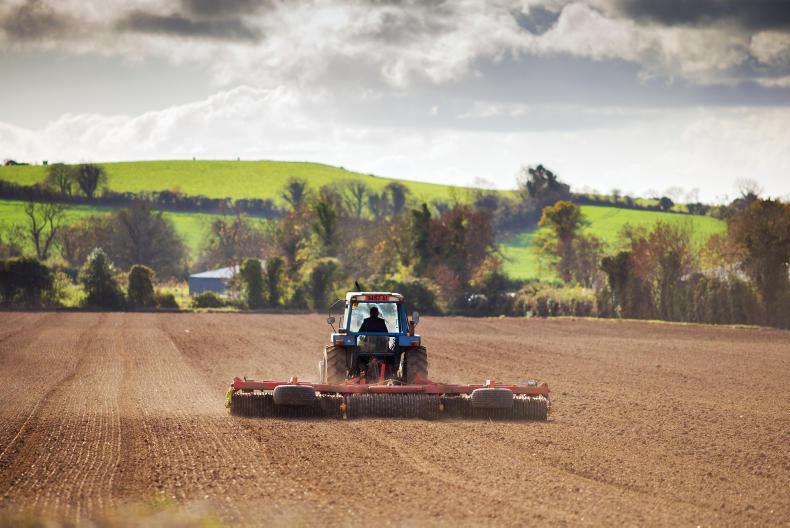




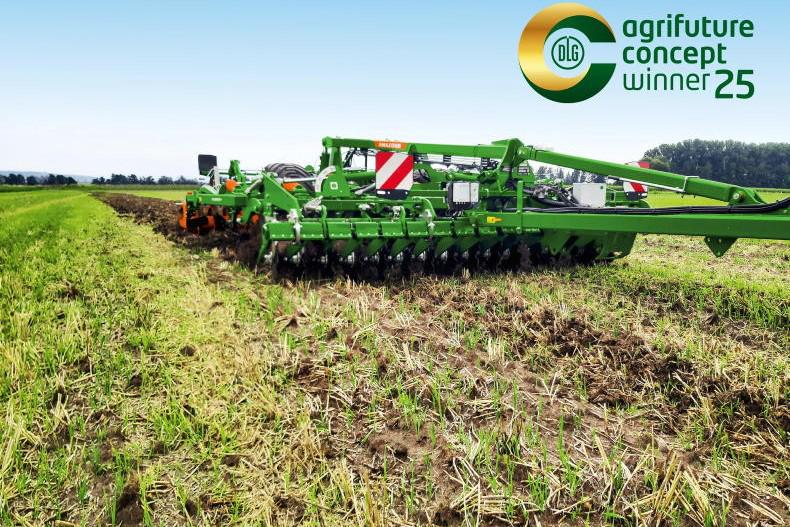
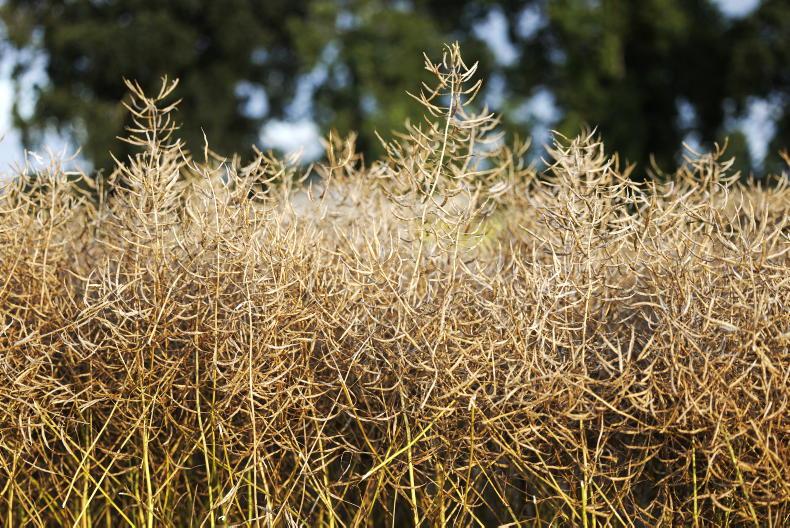
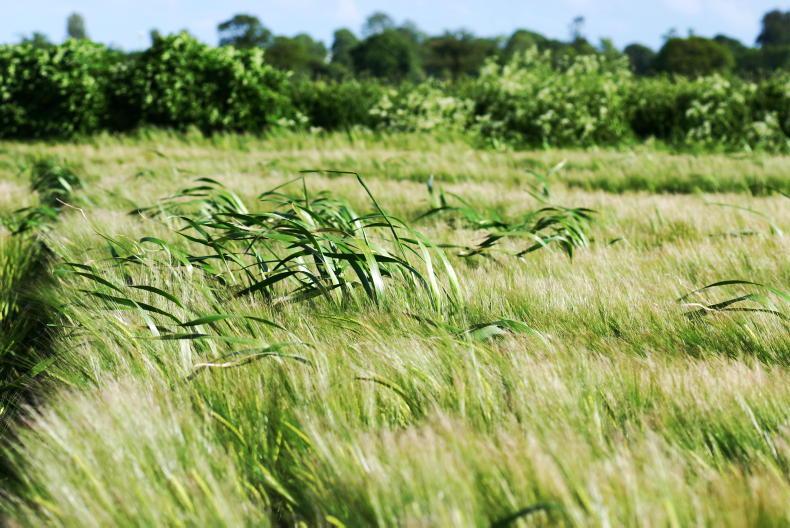
SHARING OPTIONS